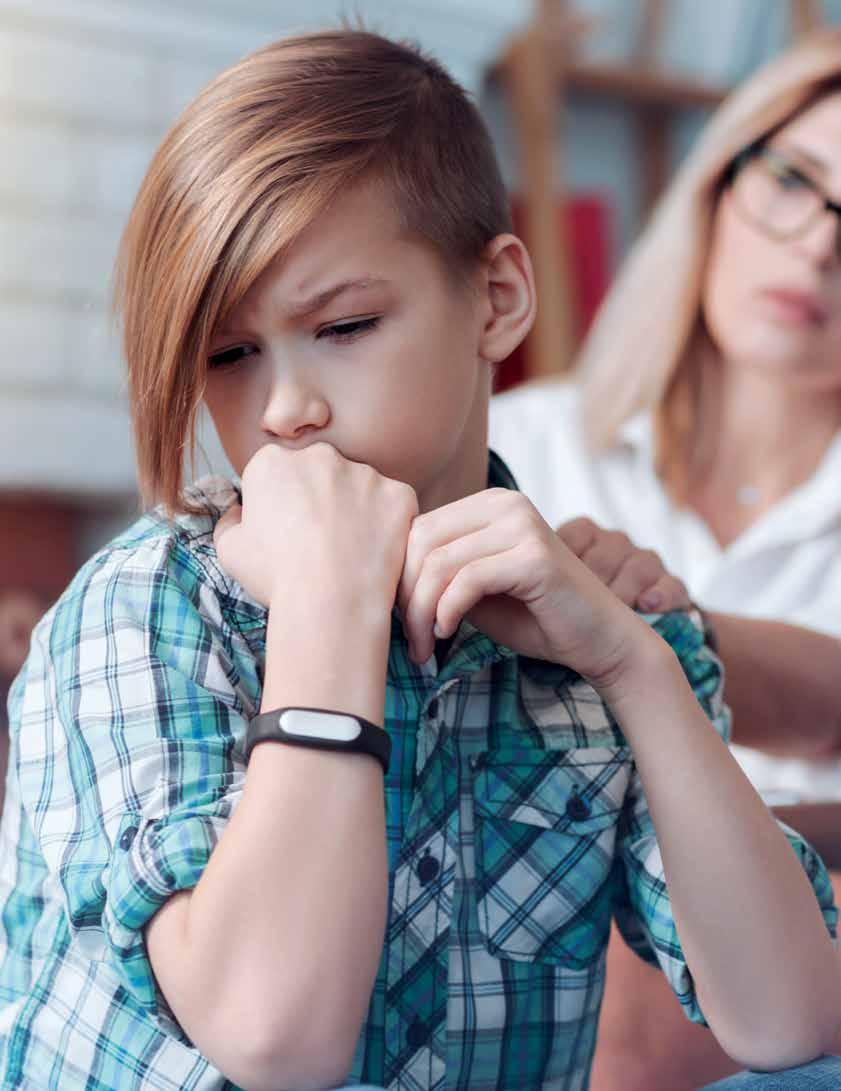
17 minute read
What Can I Do to Help My Child Who is Being Bullied?
what can I do to help my child
WHO IS BEING BULLIED?
By LEN LANTZ, MD
It is tough being a kid and it can be scary being a parent, especially if you find out that your child is being bullied. There are a number of different strategies for dealing with bullies, but I would like to share just one that can make all the difference in the world.
As parents, we often give our kids advice, but the advice does not teach them skills for dealing with life. Our kids need to practice learning skills and you can be the teacher of those skills with this 3-step strategy. Actually, it’s just a game that can be a lot of fun.
THE BULLY GAME
Now, remember, this is a game. If your first thought is, “Isn’t there a therapist or someone who can teach this to my child?”, then my answer is, “Just give it a try!” Chances are, both you and your child can learn something playing this game. Once you try it a few times, it will make sense.
Relax. It’s just playing around. It will be a learning opportunity for both you and your child and it can be a lot of fun. Really, the hardest part is not to smile or laugh when you are doing it.
There are only a few rules while performing the game: face your bully directly, don’t smile, laugh or yell (but do project your voice). Why can’t we laugh or yell when dealing with a bully? Losing control of your emotions is what a bully wants. Smiling or laughing sends the wrong signal to the bully because dealing with a bully is not fun. Here are some examples of the 3 steps:
A bully walks up to you and slams shut your open locker.
Turn your body to squarely face the bully and look them in the eye.
1. Say, “Please don’t close my locker door.” (You are nicely telling the person to stop a specific behavior.) 2. You open the locker and the bully slams shut the locker door again. Say, “Stop closing my locker door.” (Notice that the “please” was dropped. This is not asking – it is bluntly telling the person to stop.)
continued on page 9
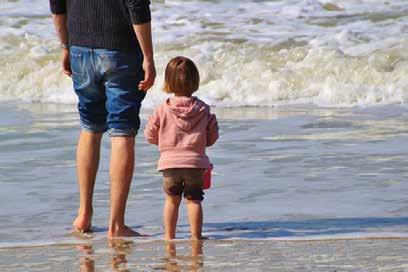
Parenting
Conversations. Resources. Connections.
We support parents & caregivers in raising joyful, competent, resilient children who live whole-hearted & balanced lives.
Join us in monthly conversations!
@OnBalanceParenting @BalanceParentg www.onbalanceparenting.org
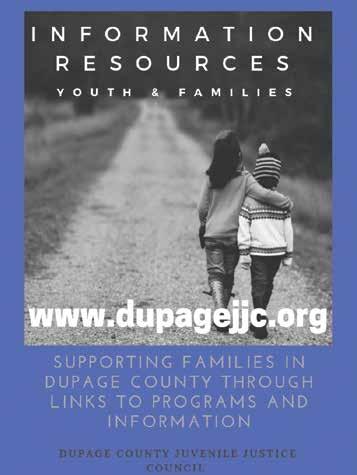

3. You open the locker and the bully slams shut the locker door again. Say,
“You’re not listening. I’m leaving.” Turn and walk away.
A BULLY WALKS UP AND TOUCHES YOUR HAIR.
Turn your body to squarely face the bully and look them in the eye.
1. Say, “Please stop touching my hair.” 2. Bully continues to touch your hair. Say, “Stop touching my hair.” (If the bully has not stopped touching your hair, grab the wrist of the hand they are using and remove their hand from your hair.) 3. Bully continues to touch your hair. Grab the wrist of the hand they are using and remove their hand from your hair. Say, “You’re not listening. I’m leaving.” Turn and walk away.
A BULLY WALKS UP TO YOU AND SAYS, “HEY, CRY BABY.”
Turn your body to squarely face the bully and look them in the eye.
1. Say, “Please don’t call me a cry baby.” 2. The bully calls you “cry baby” again. Say, “Stop calling me a cry baby.” 3. The bully again calls you “cry baby” again. Say, “You’re not listening.
I’m leaving.” Turn and walk away.
DO YOU SEE A PATTERN IN THE ABOVE EXAMPLES?
Why do you turn your body to squarely face a bully and look them in the eye? It shows that you are strong. Why do you not laugh? It shows that you are serious. Why would you turn and walk away (if needed)? It shows the bully that you are confident and decisive and that you will not put up with their crap. What if the bully then physically attacks your child? We will get to that near the bottom of this article. What if it doesn’t work? That’s okay. Give your child a hug, see if they know why it didn’t work and ask them what they would like to practice to prepare for future encounters.
TIPS FOR THE GAME:
• Don’t worry about following the steps perfectly. • In real life, you only move on to the next step if the bully persists with negative behavior. • Squarely facing a bully means turning your whole body and making your shoulders parallel to the shoulders of the bully. You do not want to move to a new location. You just need to pivot your feet in your current location to face them and look them in the eye. • Help your child practice speaking clearly and loudly so that their voice projects around you both (projecting their voice may bring them some help). • Take turns being the bully but let your child play the bully first. • Take notes – especially when your kid shows you how hard it is. • Prepare for your child to come back to you at some point and say, “it doesn’t work” and be ready to practice some alternative solutions through role play. • Use the game to determine if it is appropriate for you to take direct action right now with the facility/school where the bullying is occurring or with the bully’s parents (for example if the bullying is extreme or pervasive).
The idea behind the above game is that you play it or practice it with your child over and over again until they feel confident doing it. You and your child alternate playing the bully role or playing them. Try roleplaying in different situations that they have witnessed or experienced. Let them play the bully the first few times until they are ready for you to play the bully. Why? Your child needs you to experience what they are going through, and it will be less threatening for your child to play the bully first. This can also give your child a chance to feel what it is like for a bully to be denied.
IF MY CHILD HAS TO TURN AND WALK AWAY, WHERE SHOULD THEY GO?
The bully game can give you an opportunity to learn more about your child and talk about what comes after step 3. For example, you could say to your child, “Okay. So, you got to step 3. Where are you going to go?” You can talk about the pros and cons of where they plan to go. They may want some privacy if they feel tearful after the episode, but going somewhere alone is not a good choice. A school library at a table near school staff, a classroom full of other students, a trusted teacher-advisor or the school office are reasonable choices. Going into a bathroom or empty stairwell would not be safe choices.
NOT JUST FOR BULLIES
Hopefully, you and your child found it fun taking turns being the bully and being themselves in the 3-step bully game. Once you and your child have switched roles a few times and they feel comfortable, then you can expand the game to role-play other situations they are dealing with. If they are having difficulty with a teacher or someone else in their lives, they can try out a dialogue with you. If the dialogue turns abusive, then they can whip out the 3-step bully strategy. Again, it usually works best if your child starts out as the other person and you first play the role of your child. Remember, try not to be awesome at the game. Role play is fun for parents if you are willing to be bad at it.
WHEN IT’S OKAY TO FIGHT BACK
Let your child know when it is okay to fight back physically. If your child is being assaulted, give them your permission to physically fight back. You should also let them know when to back off in a fight, such as when the bully has stopped attacking them or has become disabled.
Review with your child what usually happens when there is a fight at school. Even if they were acting in self-defense, they likely will be punished along with the bully. Let them know that you will have a serious expression and nod your head to the vice principal of the school as you, the parent, ask for details about the details of the fight and why it is school policy that your child is about to be punished at their school for physically defending themselves when there was no adult staff member present to supervise the children and protect your kid.
Let your child know that after the meeting with the vice-principal (when you have some privacy), you will let them know how proud you are that they did their best to protect themselves when a bully was trying to physically hurt them. I’m not kidding when I tell you that if it were my child, and they did their best to stop a bully, I probably would take them out for ice cream.
THIS IS AN OPPORTUNITY FOR YOU TO SHINE AS A PARENT
When you are willing to take the time and let down your guard in front of your child as you play the above game, they will appreciate you. You aren’t just telling them that you love them and care about their life, you are showing them. You are communicating to them that you are willing to learn with and from them. You are helping them learn life skills. Won’t it feel good to teach your child to be strong, confident and decisive when facing a bully, rather than being a victim? Imagine your child feeling more comfortable dealing with issues on their own, knowing when to get an adult involved and knowing when they need to fight back to defend themselves. It is an opportunity for you to get closer to your child, learn more about their lives and determine when it is appropriate for you to intervene. ■
Check out who’s standing out in our community.
IS THERE SOMEONE YOU’D LIKE TO NOMINATE?
Please email ycdupage@gmail.com and tell us why this individual has stood out in your crowd.
JB Bletsas GLENBARD WEST HIGH SCHOOL, SENIOR Joseph (JB) Bletsas is a senior at Glenbard West High School who joined Reality Illinois as a freshman. In that time, he has never missed a meeting or an opportunity to present to numerous Park District Boards and Village Boards throughout the county on behalf of both Smoke-Free Parks and Tobacco 21 legislation. Governor Pritzker singled out the Reality Illinois organization for their efforts when Tobacco 21 was signed into state law. JB also holds the distinction of bringing more new teen leaders to our group than any other member! JB is very much committed to the health and wellbeing of his peers.
Ian Ruggiero GLENBARD SOUTH HIGH SCHOOL, SENIOR Ian Ruggiero is a senior at Glenbard South High School and a valued member of Reality Illinois, the Teen Advisory Board to the DuPage County Health Dept. Ian volunteered to construct a scarecrow as part of the Glen Ellyn Chamber of Commerce Scarecrow Row display showcasing the work of Reality Illinois and the Prevention Leadership Team. Ian also assisted in handing out free stress kits at a drive-through event to provide some much-needed stress relief to teens throughout DuPage County safely and conveniently. Outside of his work with Illinois Reality, he recently received the rank of Eagle Scout.
Aryan Sandoval GLENBARD SOUTH HIGH SCHOOL, JUNIOR Aryan Sandoval is a junior at Glenbard South High School and one of Reality Illinois’s most active volunteers. He has participated in numerous presentations to park district boards to advocate for smoke-free parks and also volunteered to hand out stress relief kits to teens at a drive-through stress relief event. In addition, Aryan recently represented Reality Illinois in a Glenbard Parent Series event titled “Community Conversation on Suicide: Student Voice, Community Resources and Hope” in conversation with professor and author Dr. Jonathan Singer. This event shined a light on mental health impacts teens are facing that have been compounded by COVID-19 and provided strategies to help teens thrive.
Ashley Liem PROGRAM COORDINATOR, NORTHEAST DUPAGE FAMILY AND YOUTH SERVICES Ashley Liem is the recipient of the 2020 Adult Changemaker Award, which recognizes individuals and organizations who are leading the way in prevention efforts and going above and beyond to protect youth in DuPage County. Ashley is a Program Coordinator at Northeast DuPage Family and Youth Services (NEDFYS). She has impacted over 300 youth and families in her role at NEDFYS and has spearheaded the development and implementation of many new prevention activities for youth in Addison. Ashley created drop-in teen events at the Addison Public Library and launched many new programs at the Henry Hyde Resource Center in Addison, as well as initiated several youth community service projects.
Glen Ellyn Police Department
Glen Ellyn is the recipient of the 2020 Community Changemaker Award. Chief Philip Norton of the Glen Ellyn Police Department (GEPD) is dedicated to the prevention and the health and wellbeing of youth. Community members who drive past the Glen Ellyn Police Department on Park Boulevard will see a drugged driving prevention banner to remind everyone of the dangers of drugged driving. GEPD is also supportive of the Reality Illinois Youth Coalition and was happy to assist them with the successful passage of the Tobacco 21 policy in Glen Ellyn. GEPD also dedicates Community Education Officers, like Joe Nemchock, to community presentations to parents, kids, teens, and school staff on various prevention topics.
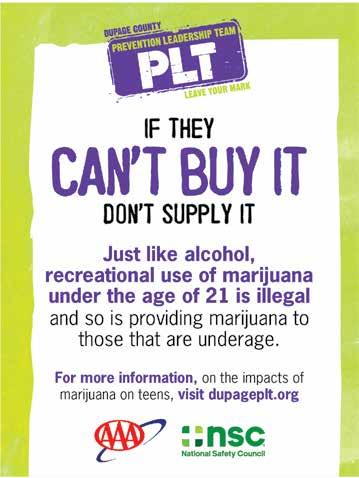
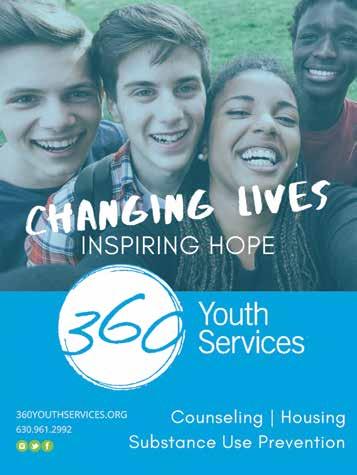
40 DEVELOPMENTAL ASSETS
40 Developmental Assets are essential qualities of life that help young people thrive, do well in school, and avoid risky behavior.
Youth Connections utilizes the 40 Developmental Assets Framework to guide the work we do in promoting positive youth development. The 40 Assets model was developed by the Minneapolis-based Search Institute based on extensive research. Just as we are coached to diversify our financial assets so that all our eggs are not in one basket, the strength that the 40 Assets model can build in our youth comes through diversity. In a nutshell, the more of the 40 Assets youth possess, the more likely they are to exhibit positive behaviors and attitudes (such as good health and school success) and the less likely they are to exhibit risky behaviors (such as drug use and promiscuity). It’s that simple: if we want to empower and protect our children, building the 40 Assets in our youth is a great way to start.
Look over the list of Assets on the following page and think about what Assets may be lacking in our community and what Assets you can help build in our young people. Do what you can do with the knowledge that even through helping build one asset in one child, you are increasing the chances that child will grow up safe and successful. Through our combined efforts, we will continue to be a place where Great Kids Make Great Communities.
Turn the page to learn more!
The 40 Developmental Assets® may be reproduced for educational, noncommercial uses only. Copyright © 1997 Search Institute® , 615 First Avenue NE, Suite 125, Minneapolis, MN 55413; 800-888-7828; www.search-institute.org. All rights reserved.
assets in action 40 DEVELOPMENTAL ASSETS
7
Police departments throughout DuPage promote drugged driving prevention
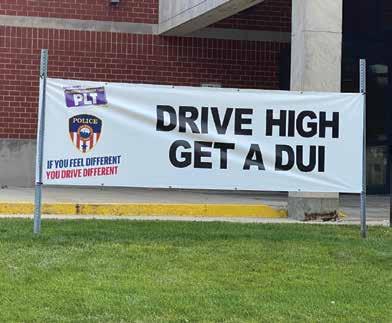
8 3

Teens host roundtable discussion on smoke-free policies and flavor bans
NEDFYS distributes summer learning kits
9
Drive-thru event for teens to receive stress relief care kits
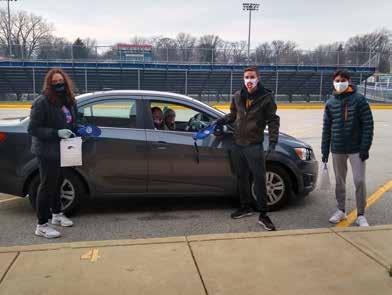
SUPPORT
1. Family support: Family life provides high levels of love and support. 2. Positive family communication: Young person and her or his parent(s) communicate positively, and young person is willing to seek advice and counsel from parent(s). 3. Other adult relationships: Young person receives support from three or more nonparent adults. 4. Caring neighborhood: Young person experiences caring neighbors. 5. Caring school climate: School provides a caring, encouraging environment. 6. Parent involvement in school: Parent(s) are actively involved in helping young person succeed in school.
EMPOWERMENT
7. Community values youth: Young person perceives that adults in the community value youth. 8. Youth as resources: Young people are given useful roles in the community. 9. Service to others: Young person serves in the community one hour or more per week. 10. Safety: Young person feels safe at home, at school, and in the neighborhood.
BOUNDARIES & EXPECTATIONS
11. Family boundaries: Family has clear rules and consequences and monitors the young person’s whereabouts. 12. School boundaries: School provides clear rules and consequences. 13. Neighborhood boundaries: Neighbors take responsibility for monitoring young people’s behavior. 14. Adult role models: Parent(s) and other adults model positive, responsible behavior. 15. Positive peer influence: Young person’s best friends model responsible behavior. 16. High expectations: Both parent(s) and teachers encourage the young person to do well.
CONSTRUCTIVE USE OF TIME
17. Creative activities: Young person spends three or more hours per week in lessons or practice in music, theater, or other arts. 18. Youth programs: Young person spends three or more hours per week in sports, clubs, or organizations at school and/or in the community. 19. Religious community: Young person spends one or more hours per week in activities in a religious institution. 20. Time at home: Young person is out with friends “with nothing special to do” two or fewer nights per week.
If you or your child would like to submit a picture that represents one of the 40 Developmental Assets, please email ycdupage@gmail.com with a picture and the number of the asset the picture represents.
Not all pictures are guaranteed publication.
22
COMMITMENT TO LEARNING
21. Achievement motivation: Young person is motivated to do well in school. 22. School engagement: Young person is actively engaged in learning. 23. Homework: Young person reports doing at least one hour of homework every school day. 24. Bonding to school: Young person cares about her or his school. 25. Reading for pleasure: Young person reads for pleasure three or more hours per week.
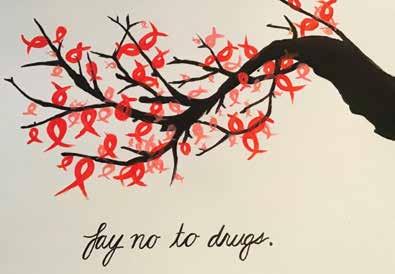
POSITIVE VALUES

26. Caring: Young person places high value on helping other people. 27. Equality and social justice: Young person places high value on promoting equality and reducing hunger and poverty. 28. Integrity: Young person acts on convictions and stands up for her or his beliefs. 29. Honesty: Young person “tells the truth even when it is not easy.” 30. Responsibility: Young person accepts and takes personal responsibility. 31. Restraint: Young person believes it is important not to be sexually active or to use alcohol or other drugs.
SOCIAL COMPETENCIES
32. Planning and decision making: Young person knows how to plan ahead and make choices. 33. Interpersonal competence: Young person has empathy, sensitivity, and friendship skills. 34. Cultural competence: Young person has knowledge of and comfort with people of different cultural/racial/ethnic backgrounds. 35. Resistance skills: Young person can resist negative peer pressure and dangerous situations. 36. Peaceful conflict resolution: Young person seeks to resolve conflict nonviolently.
POSITIVE IDENTITY
37. Personal power: Young person feels he or she has control over “things that happen to me.” 38. Self-esteem: Young person reports having a high self-esteem. 39. Sense of purpose: Young person reports that “my life has a purpose.” 40. Positive view of personal future: Young person is optimistic about her or his personal future.

31
Red Ribbon Week poster created by Aryon Sandoval
17
Adult and teen volunteers spread underage drinking prevention message
39
Scarecrow in Glen Ellyn promotes Reality Advisory Committee
Over 60 teens attend virtual Teen PhilanthroParty
